The Galileo mission, named in honor of Italian astronomer Galileo Galilei who in 1610 discovered the four large moons orbiting Jupiter, received Congressional approval for flight in 1977, targeting a Space Shuttle launch in late 1981. By that time, Pioneer 10 and 11 had completed the first exploratory flybys of Jupiter and the more sophisticated Voyager 1 and 2 had just set out for their respective flybys. The new project, first known as Jupiter Orbiter/Probe (JOP), intended to place a sophisticated spacecraft into orbit around the largest planet in the solar system for in-depth observations over two years. In addition, prior to orbital insertion, the spacecraft would release a probe to make in-situ observations during its plunge through Jupiter’s upper atmosphere, relaying the data to Earth via the orbiter, before succumbing to extreme environmental conditions. The Jet Propulsion Laboratory in Pasadena, California, managed the development and operations of the mission, with NASA’s Ames Research Center in California’s Silicon Valley having prime responsibility for the probe, basing its design on the Pioneer Venus Large Probe.
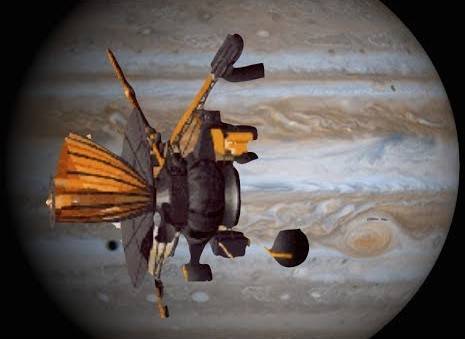
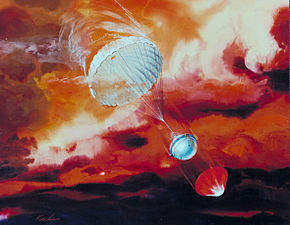
Left: Illustration of Galileo in orbit around Jupiter. Right: Illustration by Ken Hodges of Galileo’s entry probe during its descent through Jupiter’s upper atmosphere.
Delays in the Shuttle Program led to incremental slips of the launch first to 1984 and then to 1986. The upper stage to send it from Earth orbit toward Jupiter changed from the Inertial Upper Stage (IUS) to the high-energy liquid-hydrogen fueled Centaur, back to the less powerful IUS, and then back to the Centaur. In preparation for launch in May 1986, JPL delivered Galileo to the Kennedy Space Center (KSC) in December 1985. The January 1986 Challenger accident put all Shuttle flights on hold, and a thorough safety review led NASA to cancel the Shuttle Centaur combination in June 1986. Workers shipped Galileo back to JPL and NASA managers reprogrammed Galileo for launch using the IUS on a Shuttle flight in 1989. Using the less-powerful IUS meant Galileo would need three gravity-assist maneuvers, one at Venus and two at Earth, to achieve the velocity required to reach Jupiter, the so-called VEEGA (Venus-Earth-Earth Gravity Assist) trajectory. This increased travel time from two to six years, and since it was traveling closer to the Sun than previously anticipated, engineers installed additional thermal shielding on the spacecraft. Workers shipped Galileo back to KSC in April 1989 for final integration with the IUS and installation into the Shuttle’s payload bay.
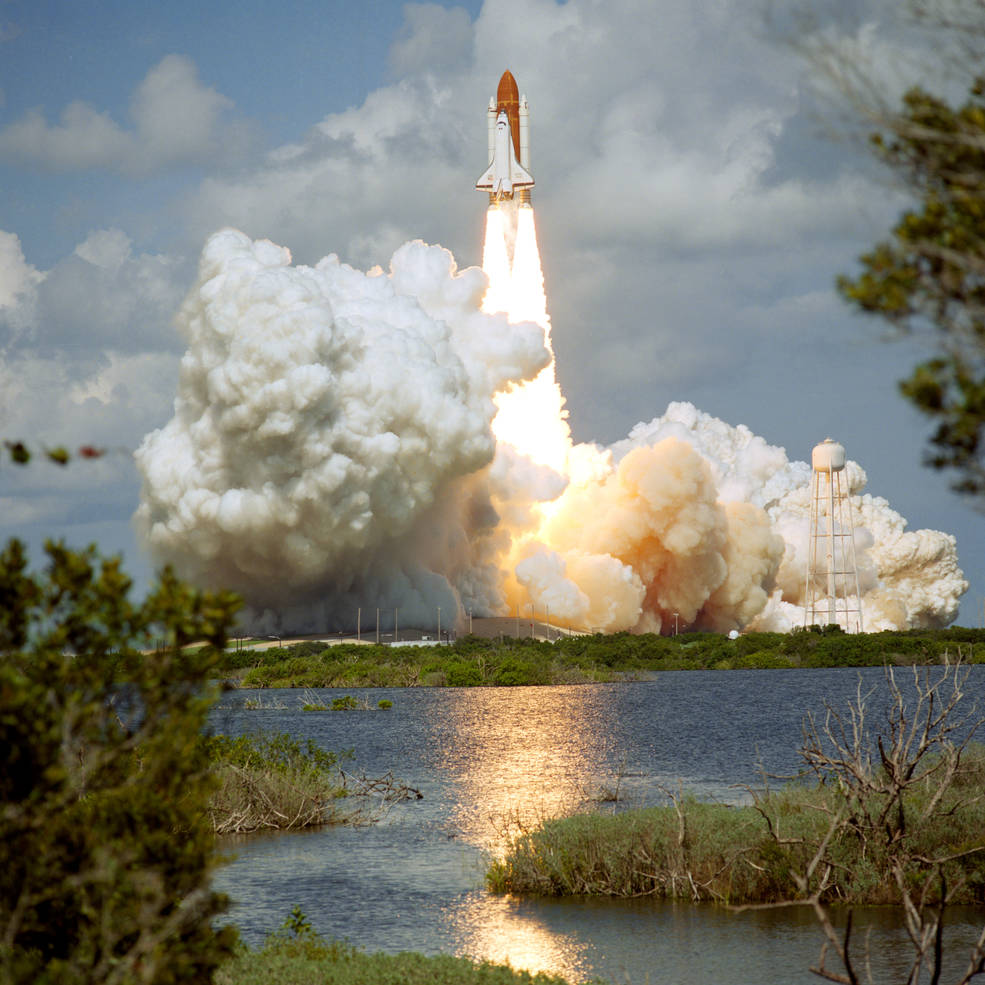
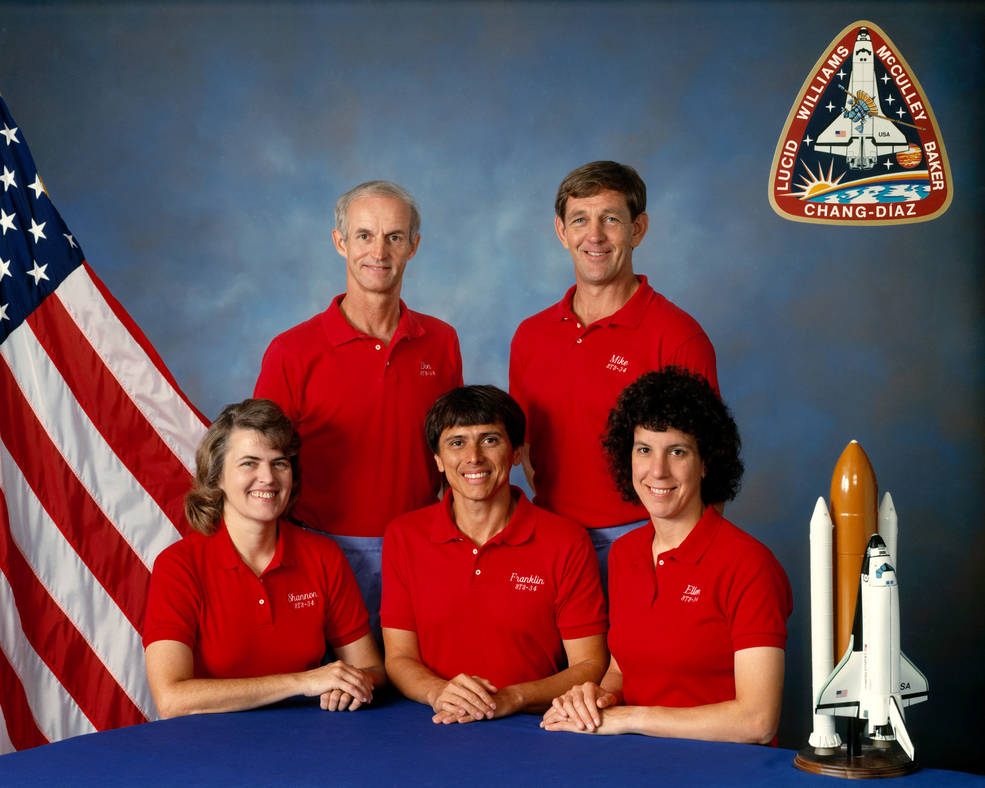
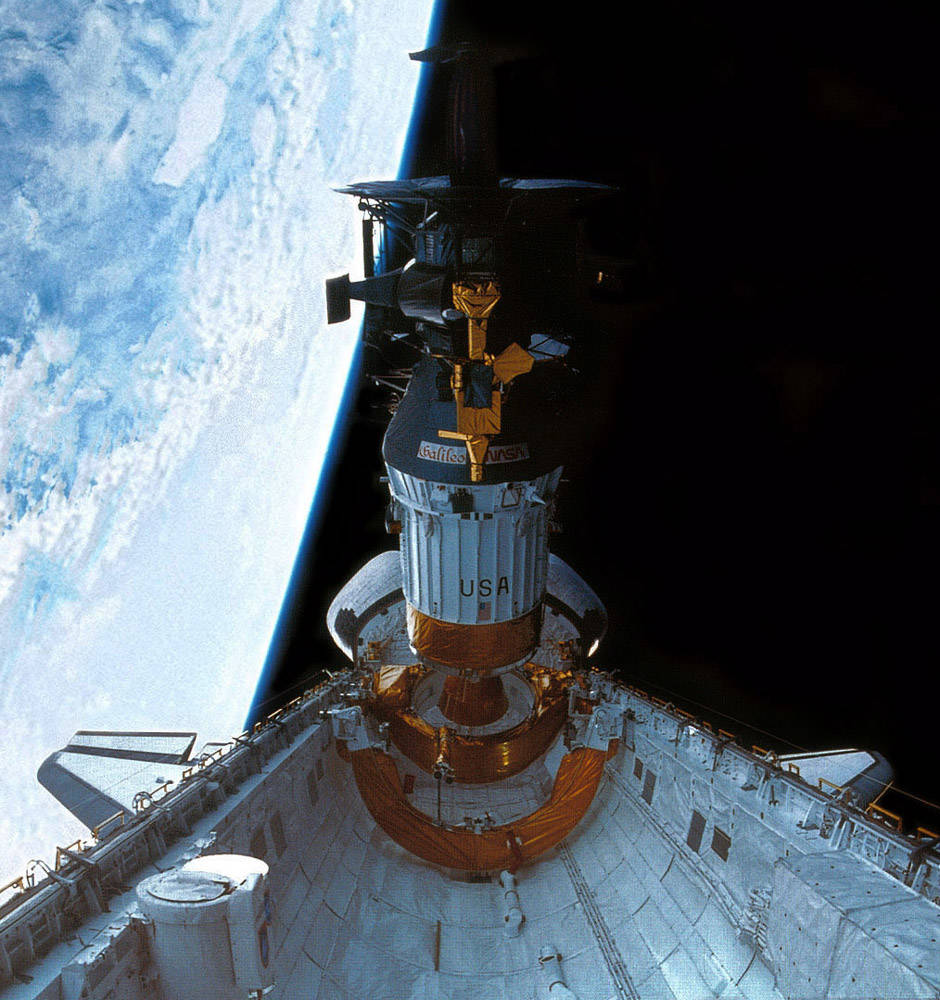
Left: Launch of STS-34 carrying Galileo to space. Middle: The crew of STS-34 (front, left to right) Lucid, Chang-Díaz, and Baker, (back, left to right) Williams and McCulley. Right: Crew of Space Shuttle Atlantis deploying Galileo attached to its Inertial Upper Stage to begin its lengthy journey to Jupiter.
The much delayed Galileo finally made it into space on Oct. 18, 1989, aboard the Space Shuttle Atlantis during the STS-34 mission. Later that day, the crew of Donald E. Williams, Michael J. McCulley, Shannon M. Lucid, Franklin R. Chang-Díaz, and Ellen S. Baker deployed the 5,246-pound spacecraft attached to its IUS. One hour after deployment, the IUS ignited to send Galileo on its six-year journey to Jupiter, with the spacecraft flying free of the rocket stage 47 minutes later. The Galileo orbiter carried 10 science instruments weighing 260 pounds, including a camera system designed to return images of Jupiter’s satellites at 20 to 1,000 times better resolution than Voyager’s best, partly due to closer fly-by distances. The 747-pound probe carried seven instruments for measuring various parameters of the Jovian atmosphere during its rapid plunge. Seventeen principal investigators representing six countries led a team of more than 100 scientists involved with Galileo.
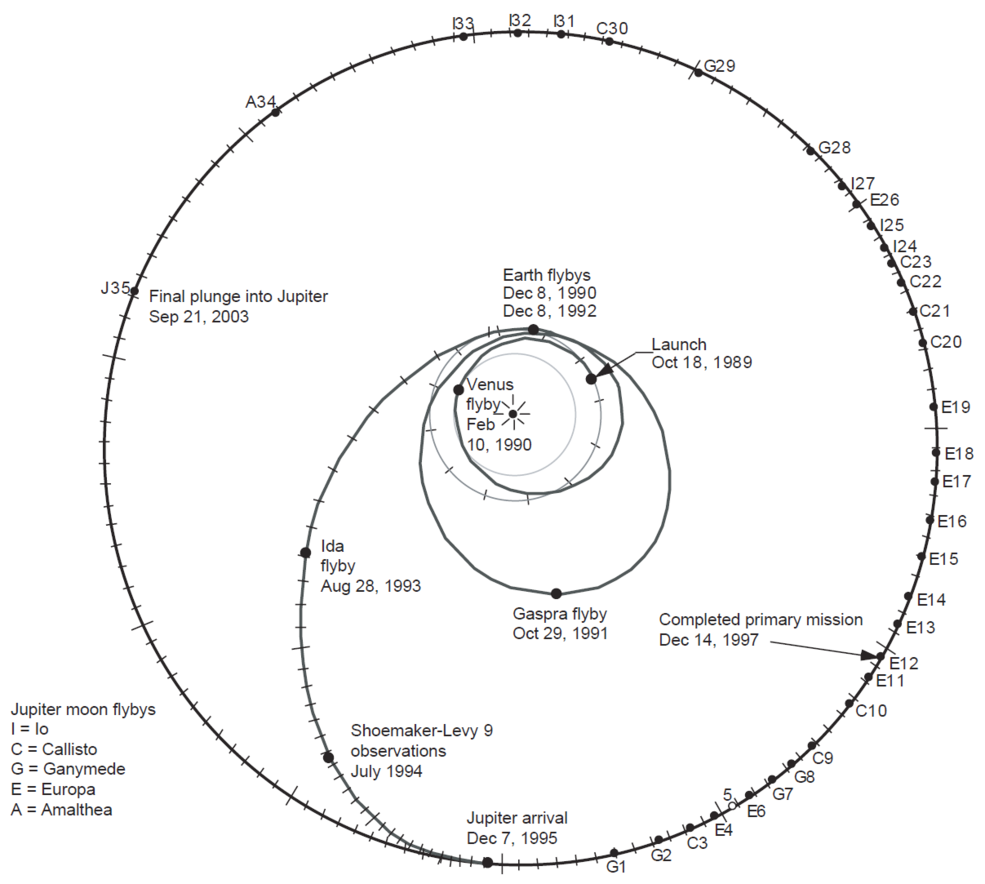
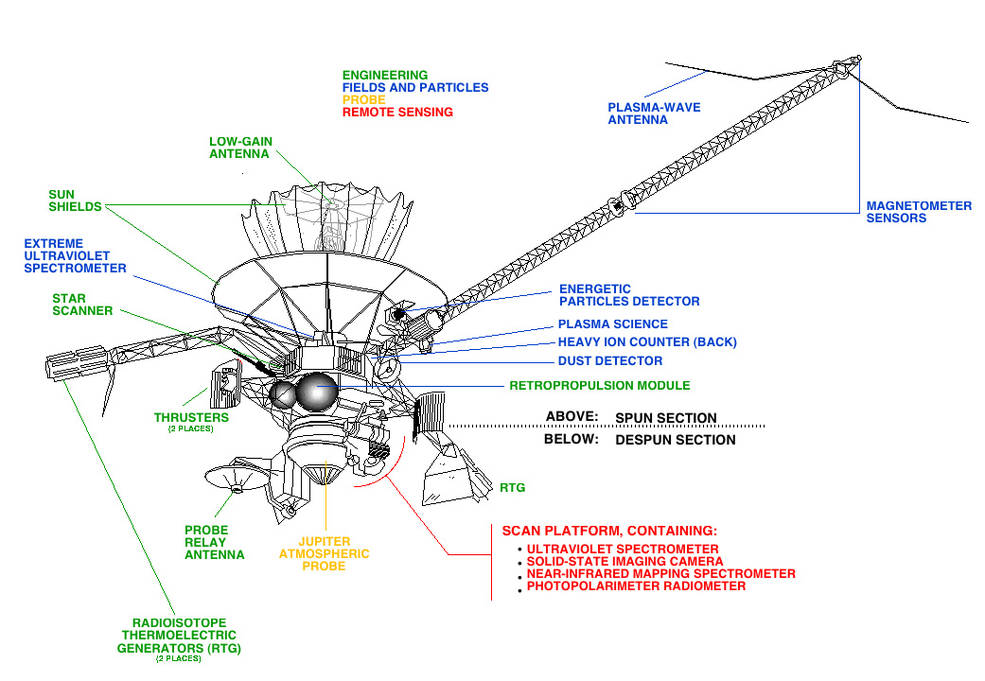
Left: Trajectory of Galileo to reach Jupiter, and key events during the planetary orbital phase. Right: Galileo and its scientific instruments.
Galileo’s first planetary encounter occurred on Feb. 10, 1990, when it flew by Venus at a distance of 10,000 miles. In addition to picking up speed to send it on to its next encounter, Galileo tested out several of its science instruments including the imaging system, taking the first photographs of mid-level clouds and confirming the existence of lightning on the planet. On Dec. 8, 1990, during its 600-mile flyby of Earth, Galileo’s instruments detected chemical signatures in atmospheric trace elements associated with life form activity. The spacecraft also conducted observations of the Moon. A major anomaly occurred on April 11, 1991, when Galileo’s 16-foot diameter high-gain antenna failed to deploy fully. It is believed that the multiple prelaunch ground transports of the spacecraft, the vibration during launch and extended time exposed to vacuum conditions affected the lubrication of several of the antenna’s structural ribs, causing them to stick once in space. For the rest of the mission, a low-gain antenna was used for communication, augmented by ingenious software strategies including data compression, to maintain as much of the planned data transmission and salvage most of the science.
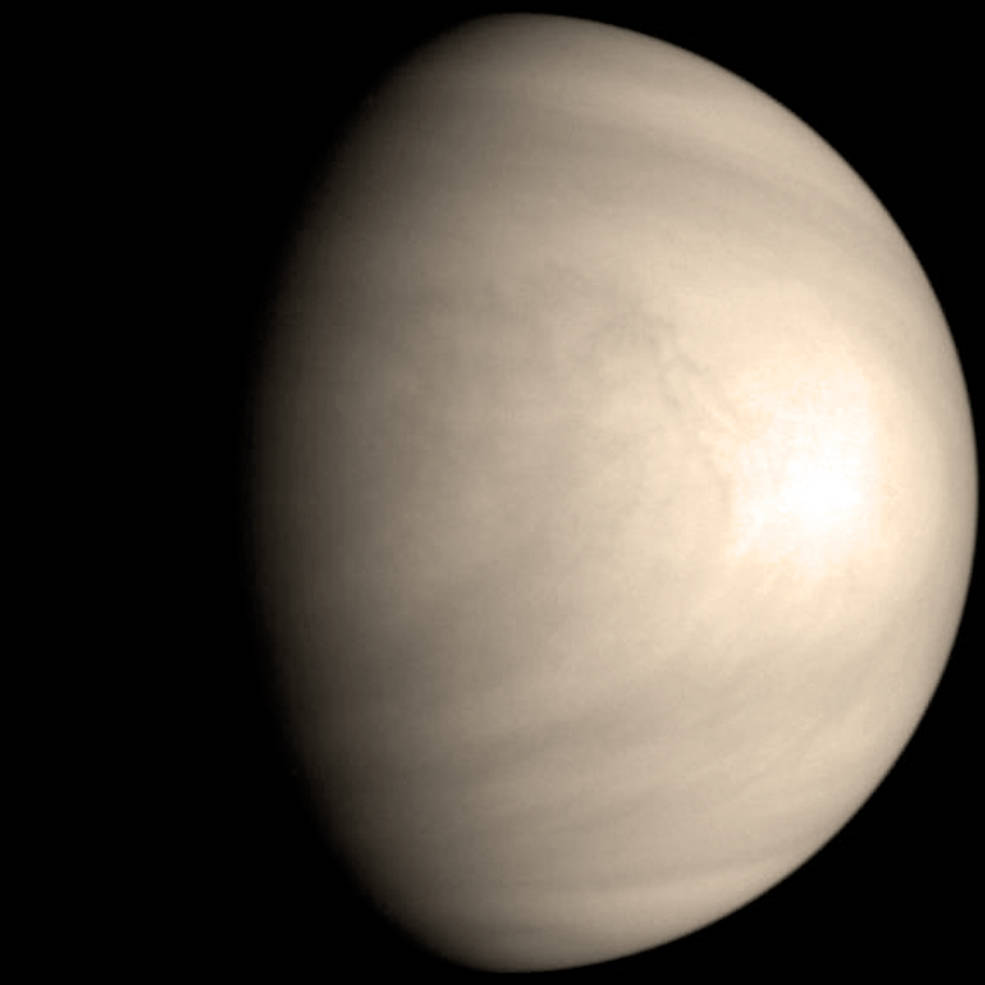
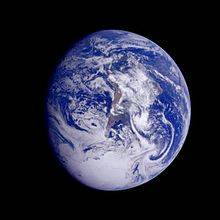
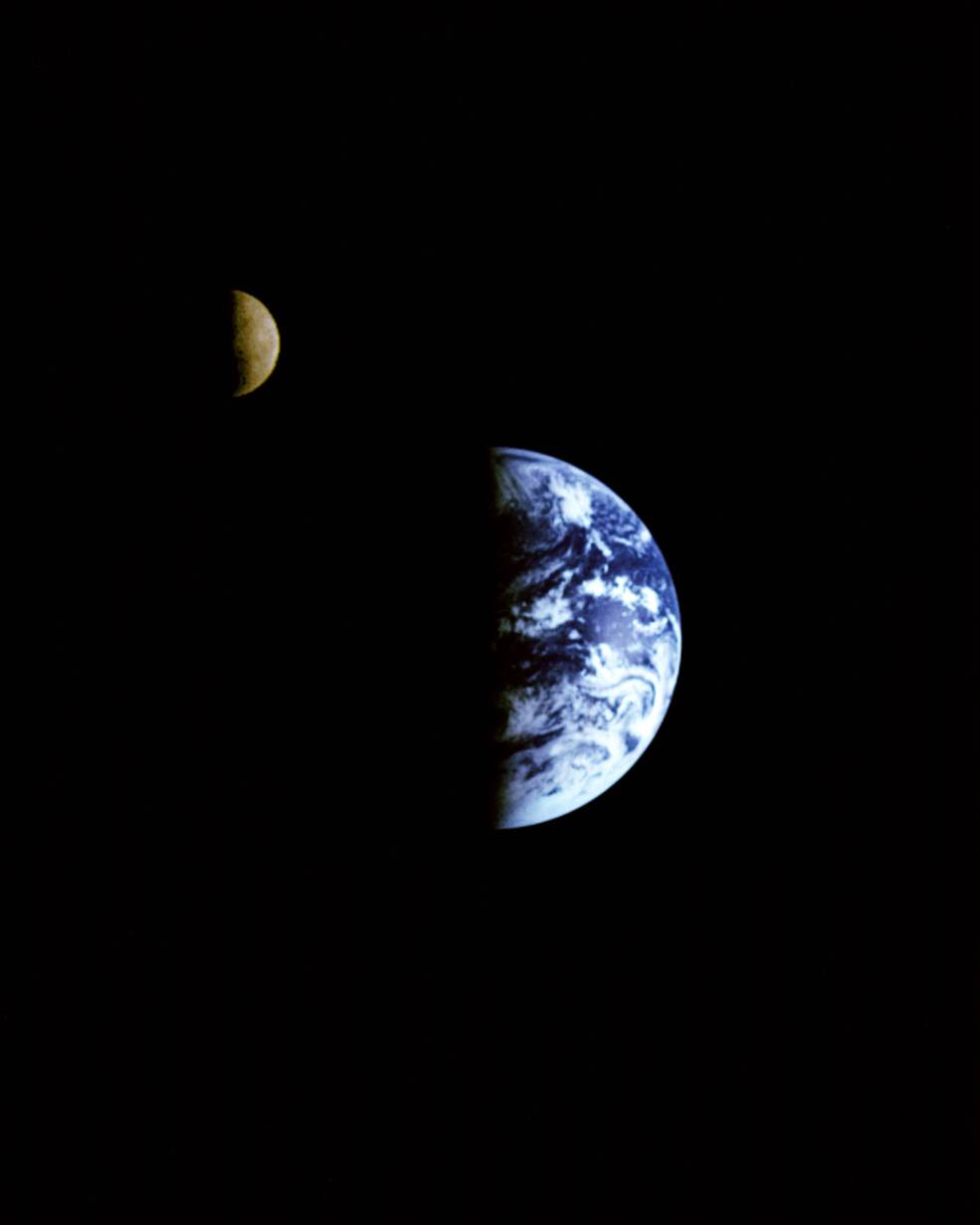
Left: Galileo image taken of Venus during the 1990 flyby. Middle: Galileo image of Earth taken during the 1990 flyby. Right: Galileo image of the Earth and Moon taken during the 1992 flyby.
Galileo made the first close-up observations of an asteroid during a flyby of 12-mile long 951 Gaspra. Flying within 997 miles of the asteroid on Oct. 29, 1991, Galileo returned much science data and 150 photographs. A second flyby of the Earth took place on Dec. 8, 1992, with Galileo coming within 188 miles of its home planet. The spacecraft now had the required velocity to head toward Jupiter. Along the way, Galileo explored its second asteroid, flying within 1,500 miles of 35-mile long 243 on Aug. 28, 1993. The spacecraft made the surprising discovery that Ida had a tiny companion, the 1-mile wide satellite Dactyl orbiting about 90 miles away, the first known moon orbiting around an asteroid.
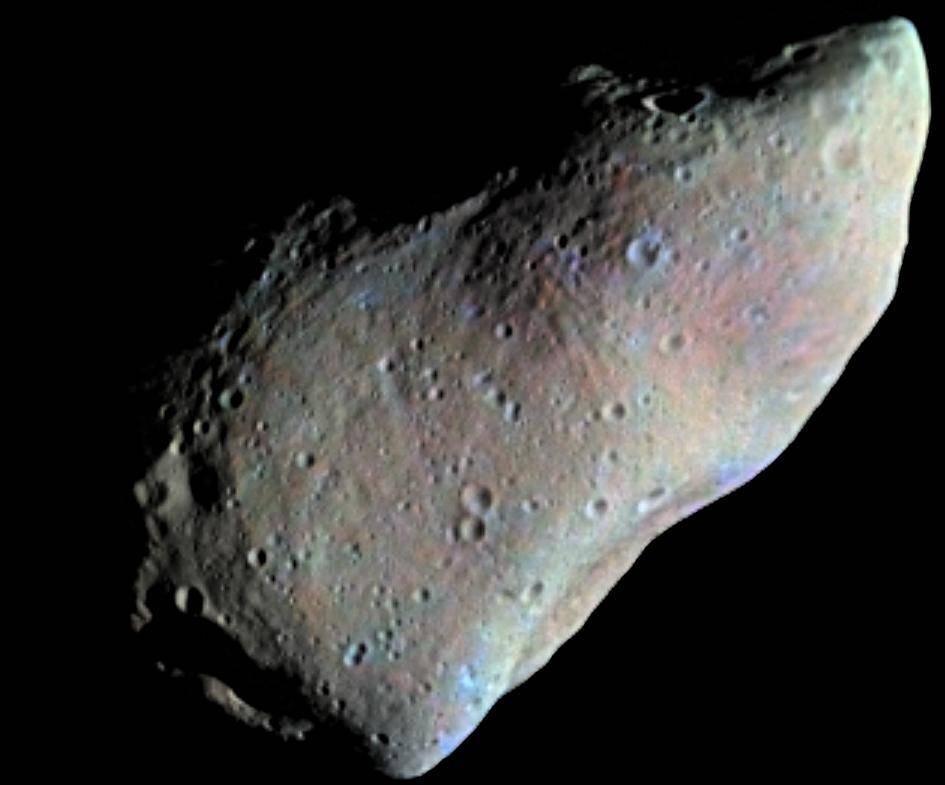
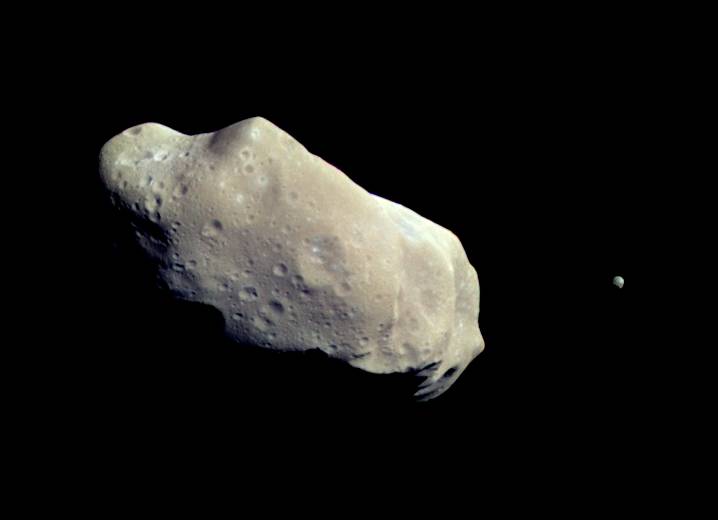
Left: Galileo image of the asteroid Gaspra. Right: Galileo image of the asteroid Ida (at left) and its tiny satellite Dactyl.
The discovery of Comet Shoemaker-Levy 9 in March 1993 provided an exciting new opportunity for Galileo’s science teams as well as the rest of Earth’s astronomers. Jupiter’s massive gravitational field had captured the comet into a roughly 2-year orbit around the giant planet 20 to 30 years earlier. During a close encounter with Jupiter in July 1992, tidal forces had fragmented the comet into at least 21 pieces, some as large as 1.2 miles across. Astronomers calculated that the cometary fragments would impact Jupiter in July 1994, enabling the first direct observations of an extraterrestrial collision. Indeed, between July 16 and 22, the cometary fragments collided with Jupiter, although the impacts occurred on the planet’s side facing away from Earth. With Jupiter’s rapid rotation, the impact sites quickly rotated into view, appearing as dark spots against Jupiter’s colorful atmosphere. Galileo’s unique position in solar orbit, still 148 million miles away from Jupiter, provided it with an excellent vantage point to observe the collision directly and it returned several images of the impacts.
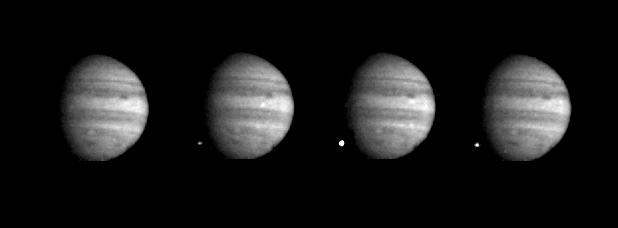
Four images taken by Galileo several seconds apart showing the impact of one of Comet Shoemaker-Levy 9’s fragments on Jupiter’s night side.
About one year later, on July 13, 1995, Galileo deployed its atmospheric probe, still 150 days and 50 million miles from its encounter with Jupiter. On Dec. 7, the probe made first contact with Jupiter’s upper atmosphere at a speed of 106,000 mph, resulting in a deceleration of more than 200 times the force of gravity and temperatures on the heat shield reaching 16,000 degrees, as hot as the Sun’s surface. The probe returned excellent science data via the orbiter for 58 minutes during a descent of 97 miles. It found that the relative abundance of atmospheric components at Jupiter’s upper atmosphere are different from those in the Sun, indicating Jupiter’s unique planetary evolution since the formation of the solar system. When pressure on the probe reached 23 atmospheres and temperatures topped 300 oF, it ceased its transmissions and it was eventually vaporized in the deeper layers of the Jovian atmosphere.
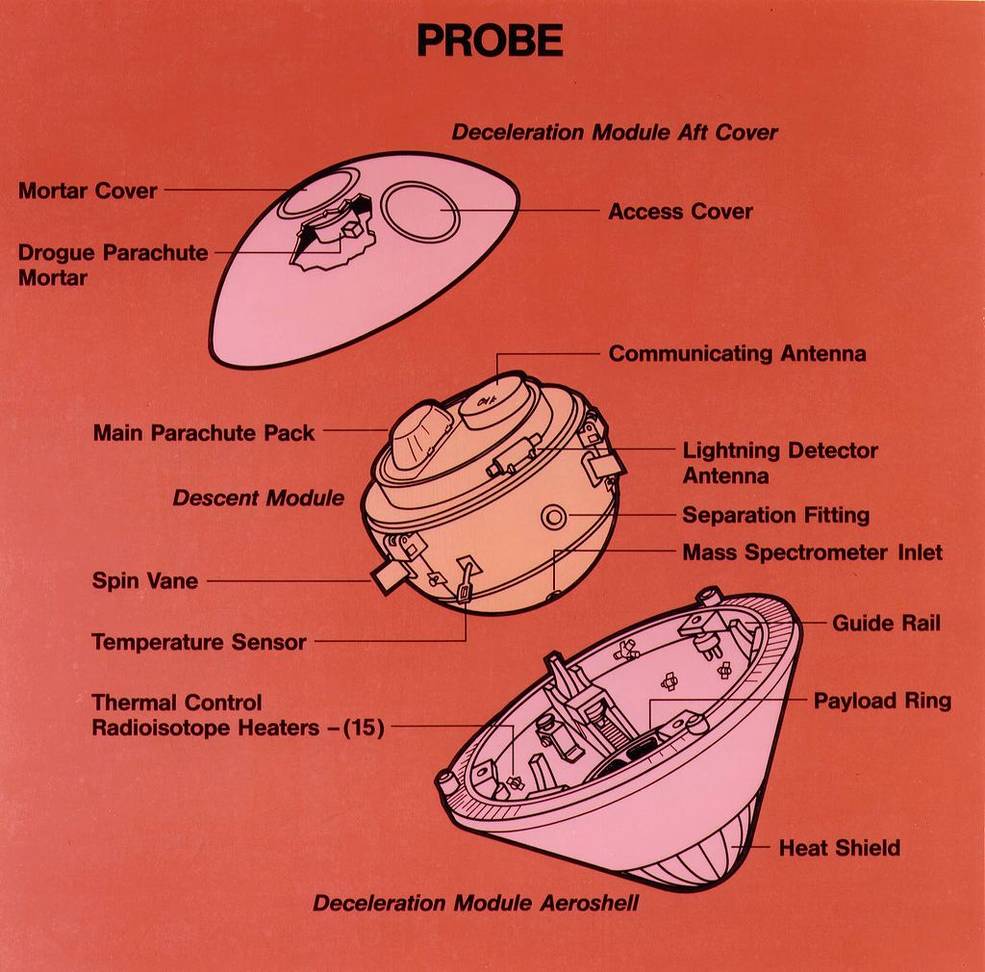
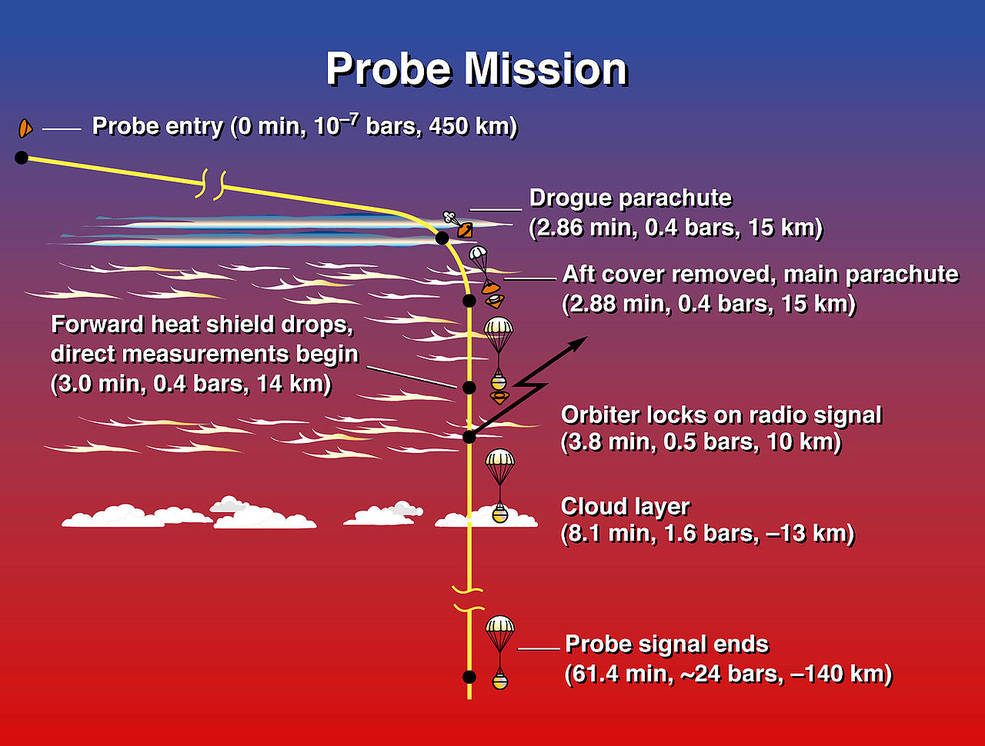
Left: Cutaway view of the Galileo probe. Right: Entry profile of the Galileo probe.
The orbiter fired its main engine on Dec. 7, 1995, becoming the first artificial satellite of Jupiter with an initial orbital period of 198 days. Galileo soon began its nominal two-year science mission during which it completed 11 orbits around Jupiter. Mission planners designed these trajectories to optimize studies of Jupiter’s magnetosphere and to enable encounters with Jupiter’s largest moons Callisto, Europa, and Ganymede. Galileo also studied Jupiter’s ring system, composed largely of dust derived from impacts with the planet’s four small inner moons Thebe, Amalthea, Adrastea, and Metis, as well as the Great Red Spot and other atmospheric phenomena. On Dec. 7, 1997, NASA managers approved the two-year Galileo Europa Mission (GEM) extension that included eight consecutive encounters with Europa to study that moon’s frozen surface in great detail. As part of the GEM, Galileo also observed Io during two close encounters and Callisto during four flybys. The Galileo Millennium Mission extension added first one more year of observations then continued until the mission’s conclusion, and included more flybys of Ganymede and Io and joint observations with the Cassini spacecraft as it completed a flyby of Jupiter in December 2000 as a gravity-assist maneuver on its way to Saturn. Galileo completed its final encounter when in November 2002 it flew by the small inner moon Amalthea, providing important information about the satellite’s density. In addition to that final encounter, Galileo had completed seven flybys of Io, eight each of Callisto and Ganymede, and 11 of Europa.
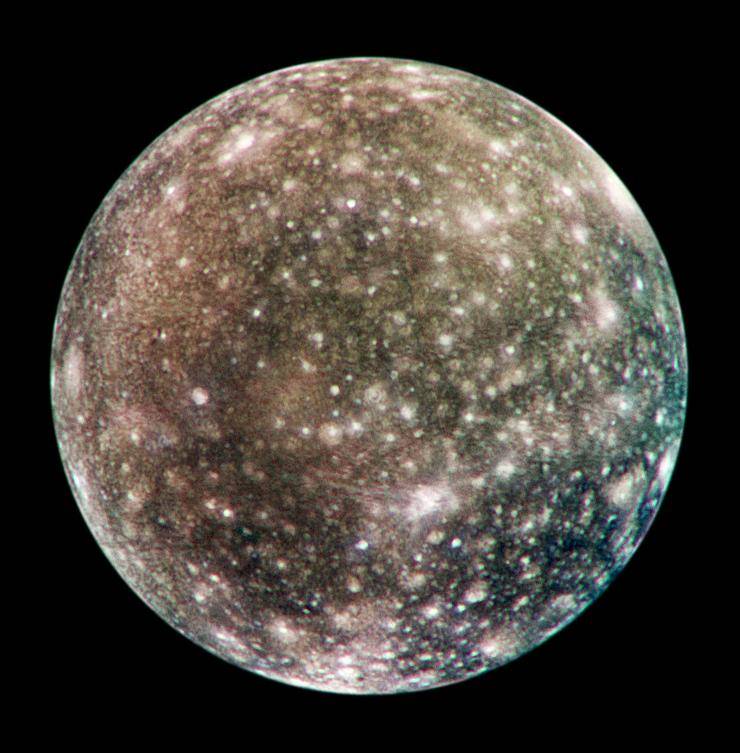
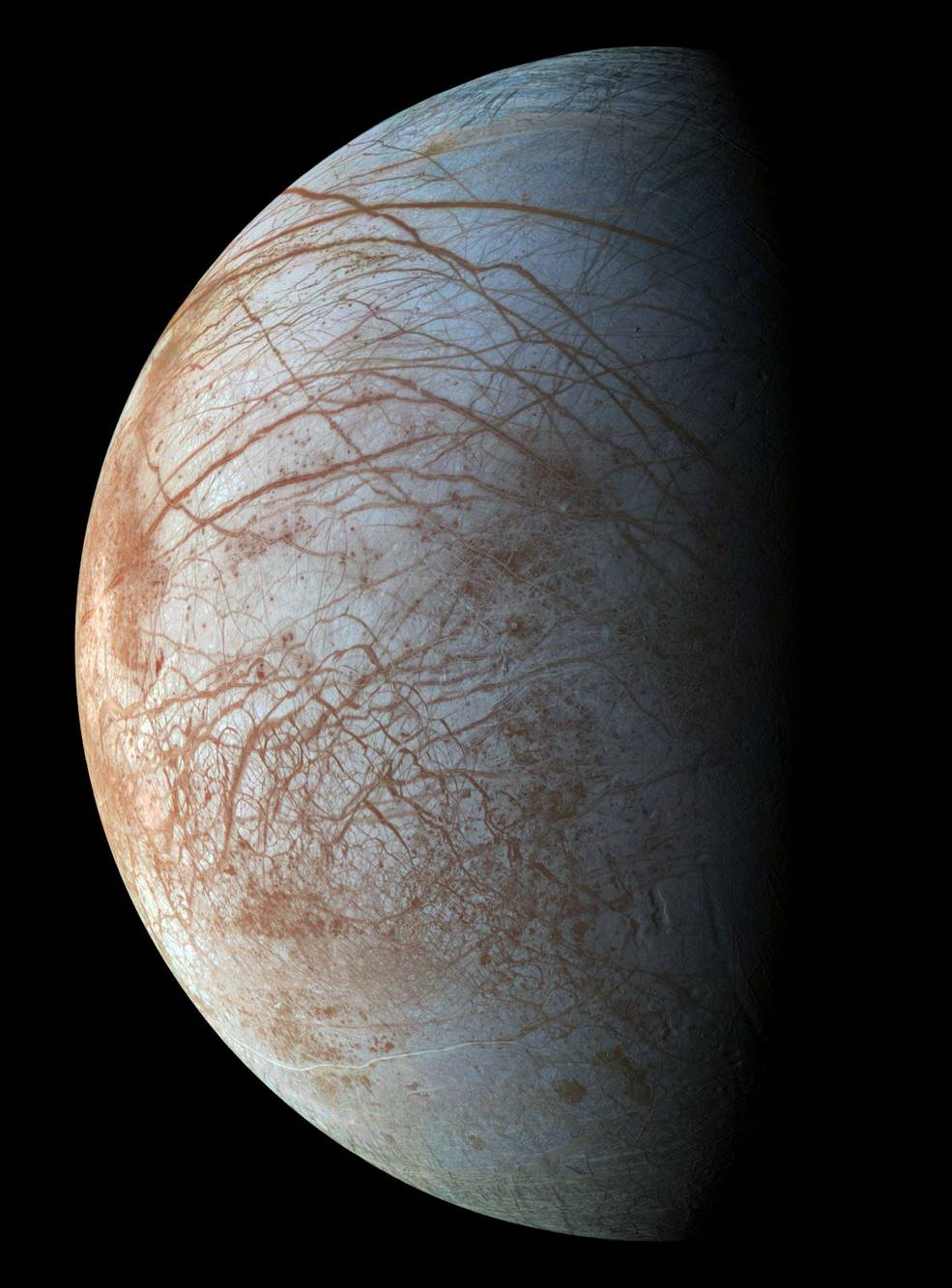
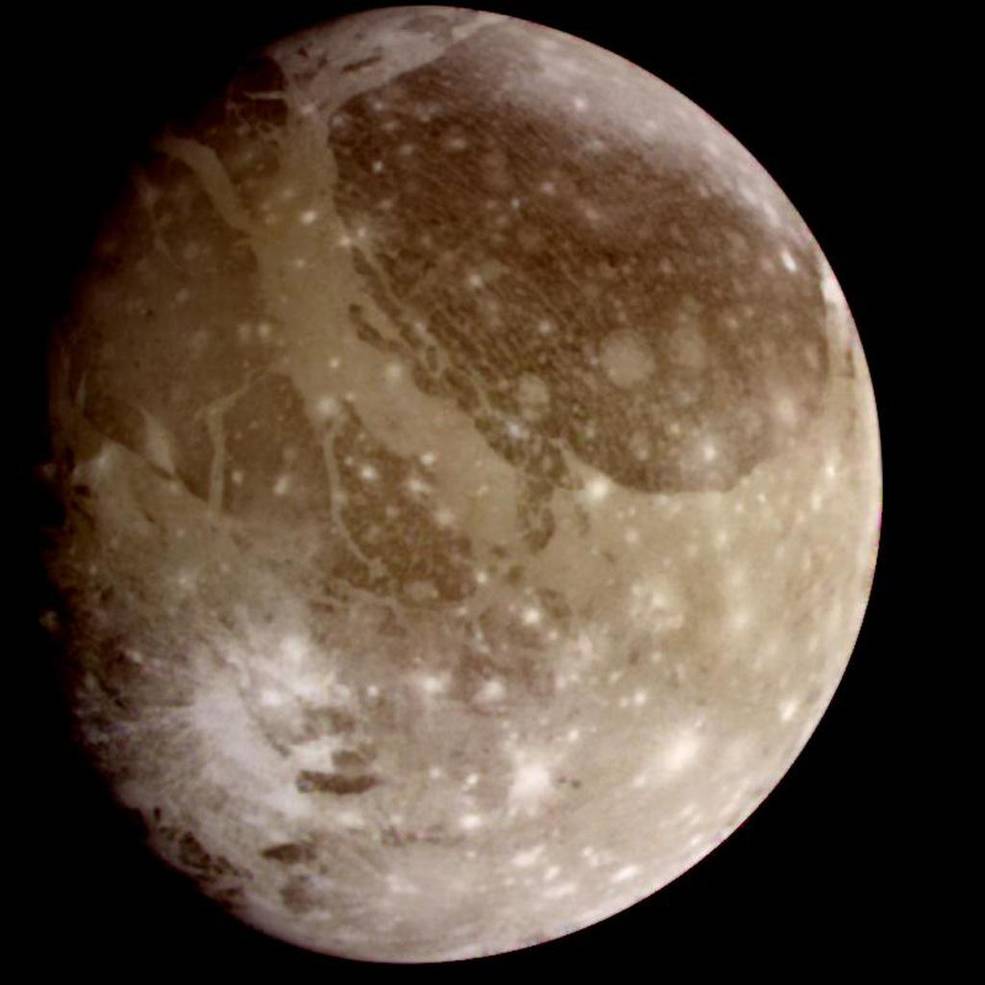
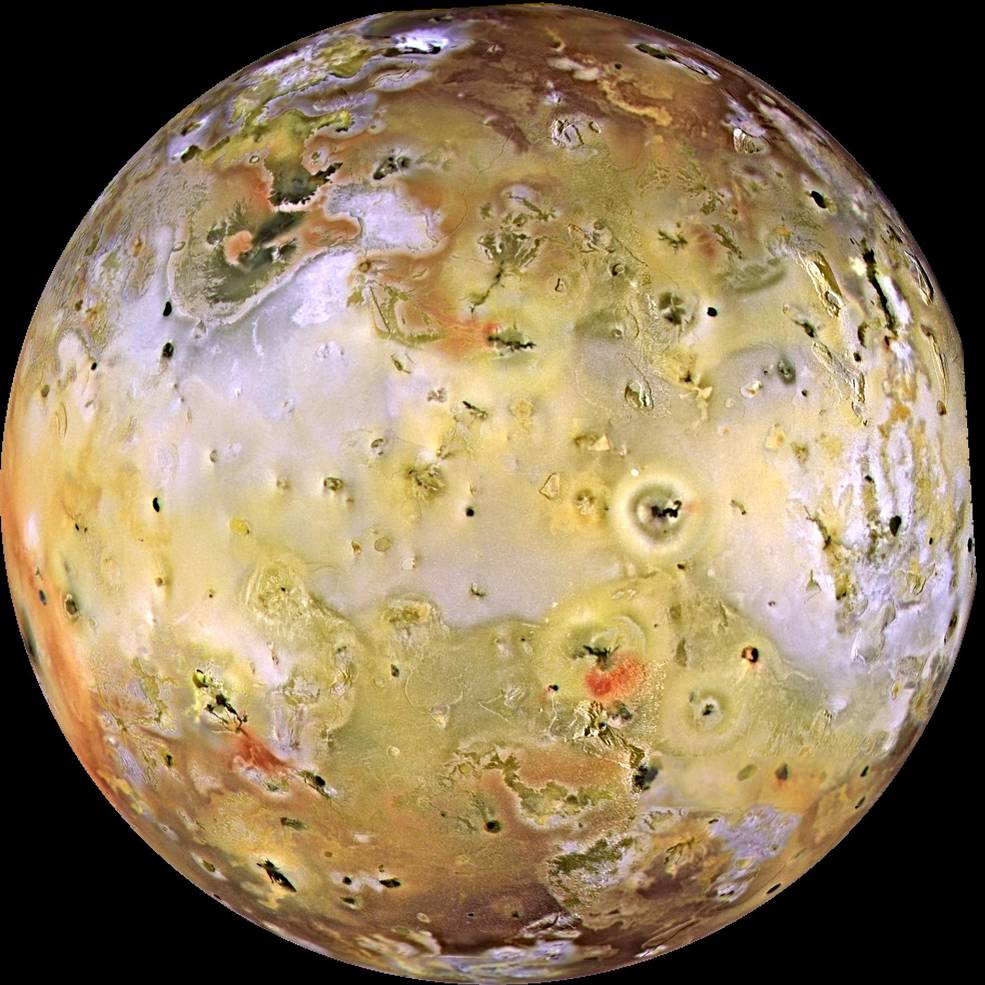
Galileo images of Jupiter’s four largest moons (left to right) Callisto, Europa, Ganymede, and Io – the satellites are not to scale.
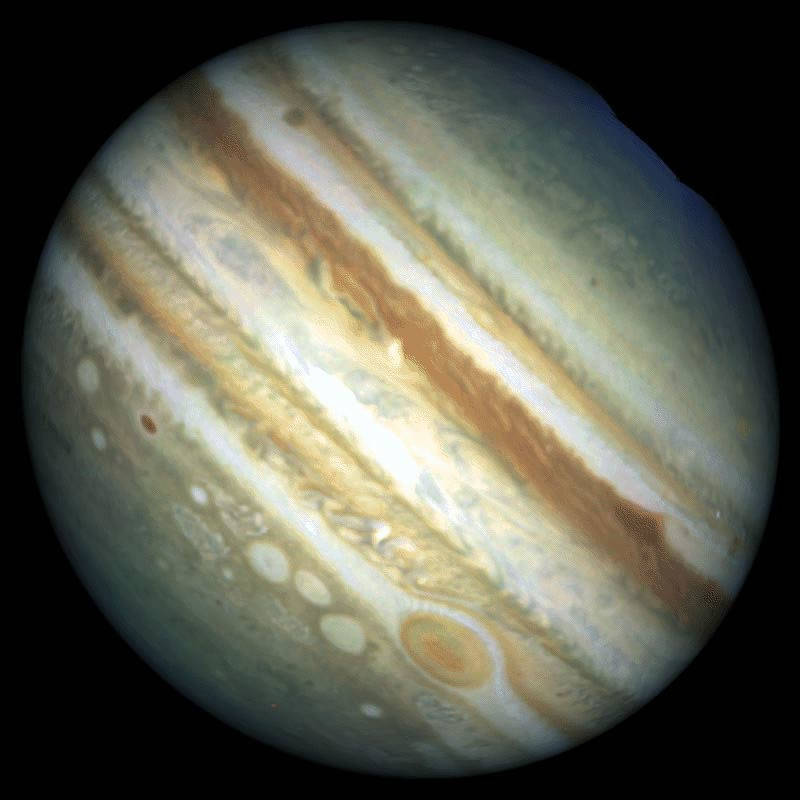
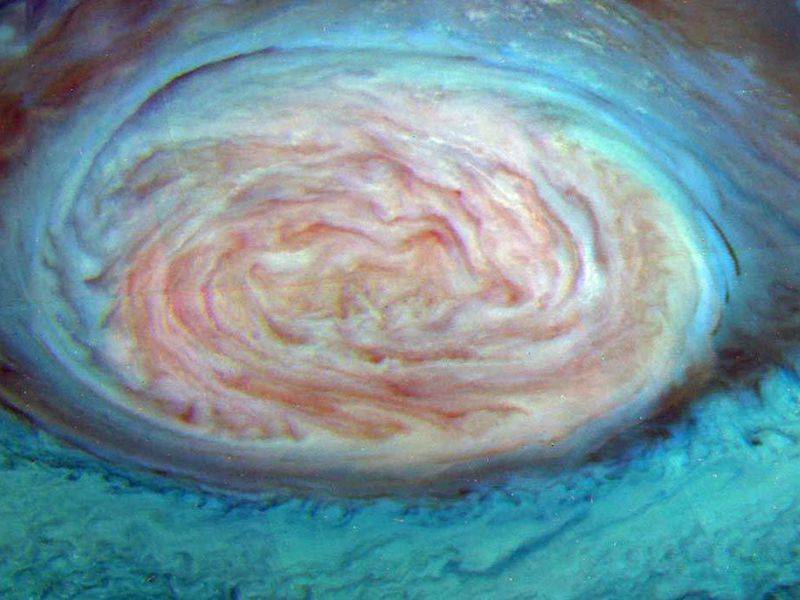
Left: Galileo full-planet image of Jupiter. Right: False-color infrared image of Jupiter’s Great Red Spot.

Composite image of Jupiter’s ring system taken in November 1996 from 1.4 million miles when Galileo was in the planet’s shadow.
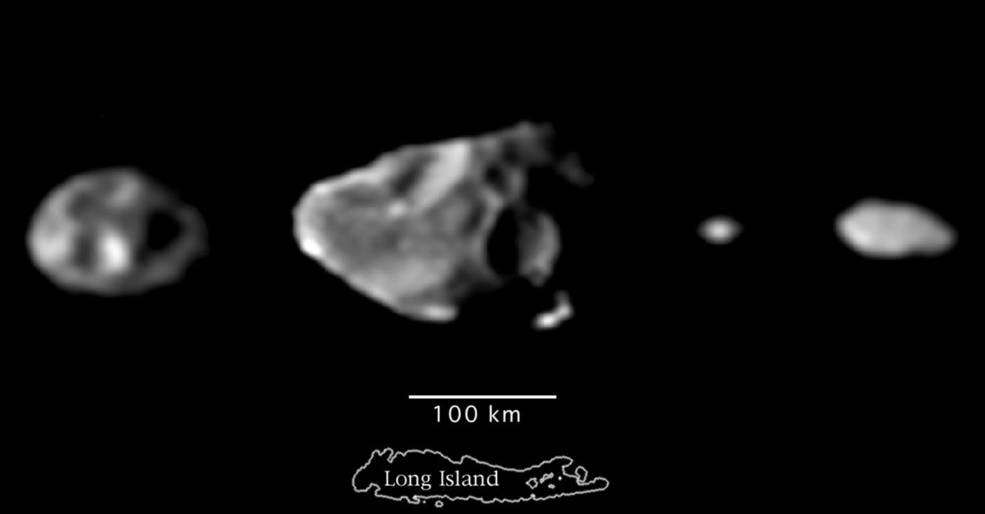
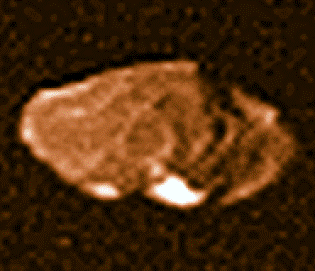
Left: Composite of Galileo images of Jupiter’s four smaller inner moons (left to right) Thebe, Amalthea, Adrastea, and Metis, compared with Long Island, New York. Right: Another Galileo image of Amalthea showing its reddish color.
Owing to its three mission extensions, Galileo endured more than four times the cumulative dose of radiation for which it was designed. Mission managers deactivated the spacecraft’s cameras on Jan. 17, 2002, after they had sustained irreparable damage from Jupiter’s strong radiation environment. Beginning in March 2003, ground controllers contacted Galileo once a week to verify its status.
To prevent Galileo from crashing onto one of Jupiter’s satellites that could potentially harbor life and contaminating it with terrestrial organisms, mission managers decided to send the spacecraft into a destructive dive into Jupiter’s atmosphere. On Sept. 21, 2003, after 14 years in space, traveling 2.8 billion miles, and 8 years in orbit around Jupiter, having completed 35 orbits around the giant planet, Galileo fired its main engine for the final time. Galileo flew into Jupiter’s atmosphere just south of the equator at a velocity of 108,000 miles per hour, several of its instruments sending science data back to Earth until the very last moment. “It has been a fabulous mission for planetary science, and it is hard to see it come to an end,” Claudia Alexander, Galileo project manager at JPL, said of the spacecraft’s demise.
Some of the more significant findings not already mentioned above, Galileo fully mapped the global dynamics of Jupiter’s magnetosphere and made the first observations of ammonia clouds in the planet’s atmosphere. The previously discovered volcanic activity on Io may be 100 times more active than on Earth, and Io’s atmosphere, largely generated by that activity, may interact with Jupiter’s atmosphere. Galileo found evidence that Ganymede has a significant magnetic field, to date the only planetary satellite known to have one. The spacecraft discovered that Ganymede, Callisto, and Europa may all have a liquid saltwater subsurface layer and all three may have a tenuous atmosphere. Galileo found evidence supporting a theory that liquid oceans exist under Europa’s icy surface. “Galileo taught us so much about Jupiter but there is still much to be learned and for that we look with promise to future missions,” said JPL Director Charles Elachi.
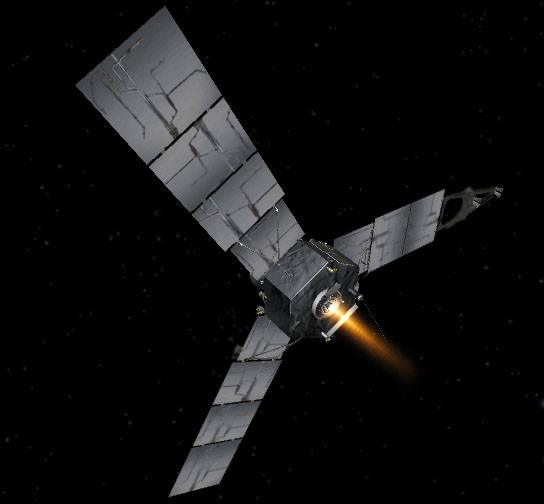
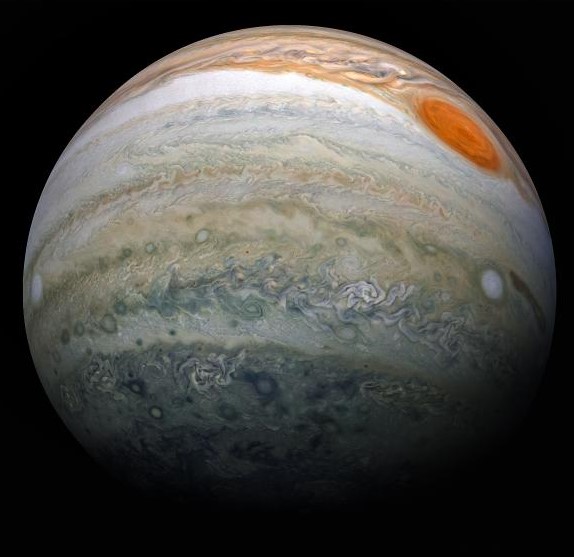
Left: Illustration of the Juno spacecraft firing it main engine. Right: Image of Jupiter taken by Juno.
The next spacecraft to explore Jupiter, the JPL-managed Juno, arrived in polar orbit around the giant planet on July 4, 2016, and continues to return stunning images and scientific data. The European Space Agency plans to launch the JUICE (JUpiter ICy moons Explorer) in 2022 to arrive at Jupiter in 2029, make several flyby of several of the large moons, and finally enter orbit around Ganymede in 2032 for an in-depth study of that satellite. Under development at NASA, the Europa Clipper will launch in 2025 with arrival at Jupiter between 2026 and 2031, depending on the launch vehicle chosen. Once in orbit around Jupiter, Europa Clipper will make up to 45 flybys of its namesake satellite at altitudes as low as 16 miles to complete a comprehensive study. The two missions, JUICE and Europa Clipper, will conduct complementary investigations to greatly increase our knowledge of Jupiter and its satellites.
For more on the Galileo mission visit https://solarsystem.nasa.gov/missions/galileo/overview/






























